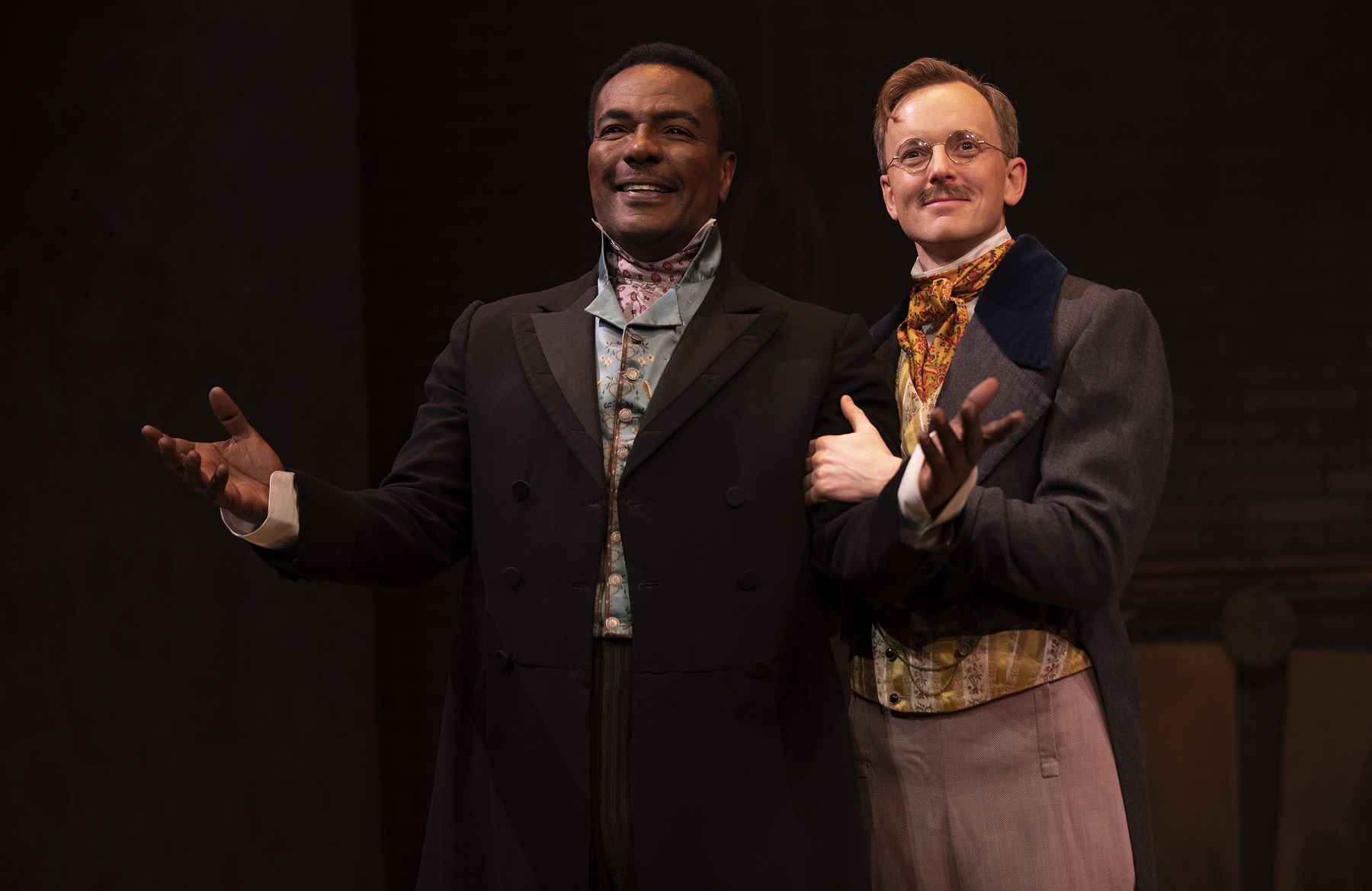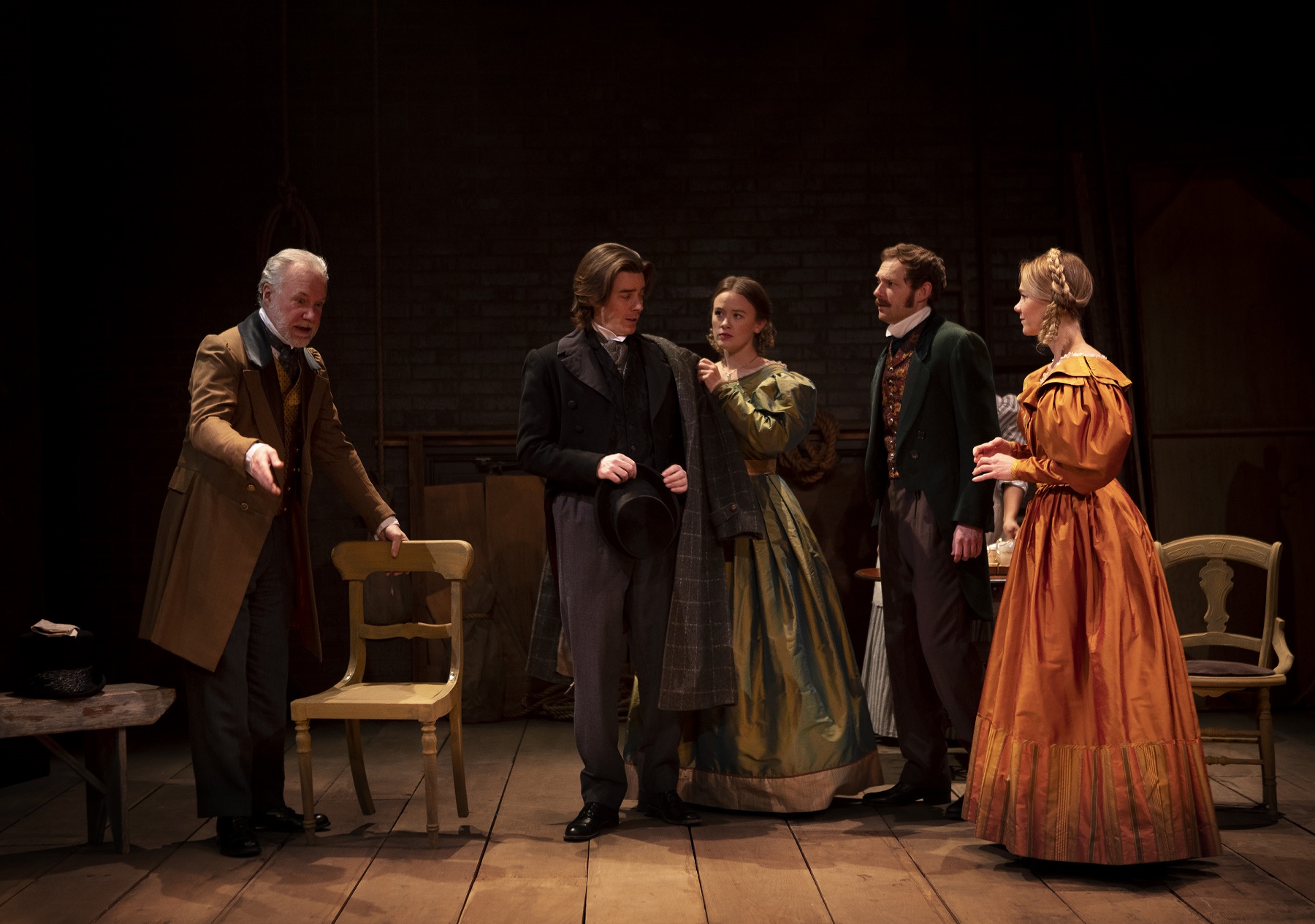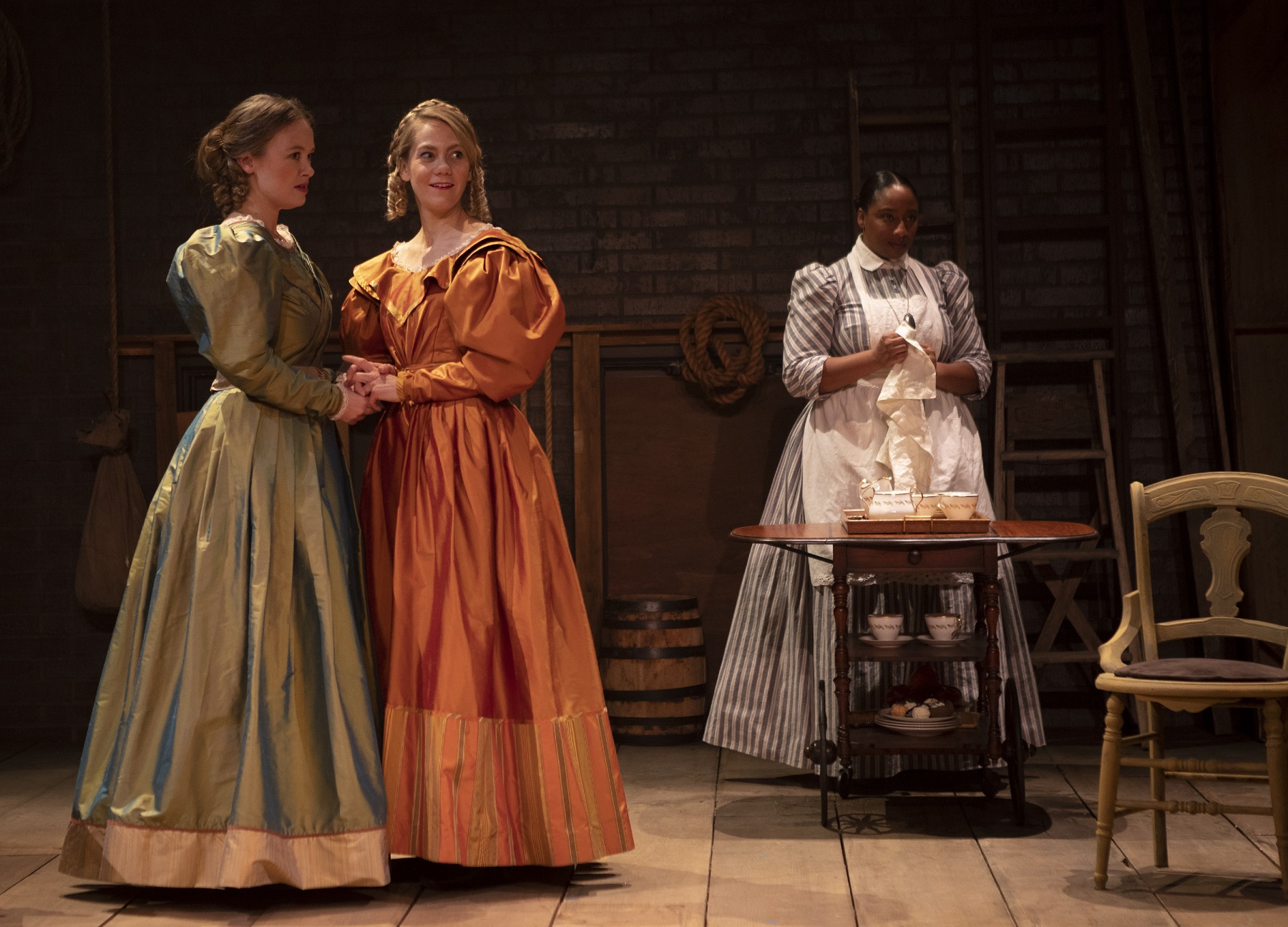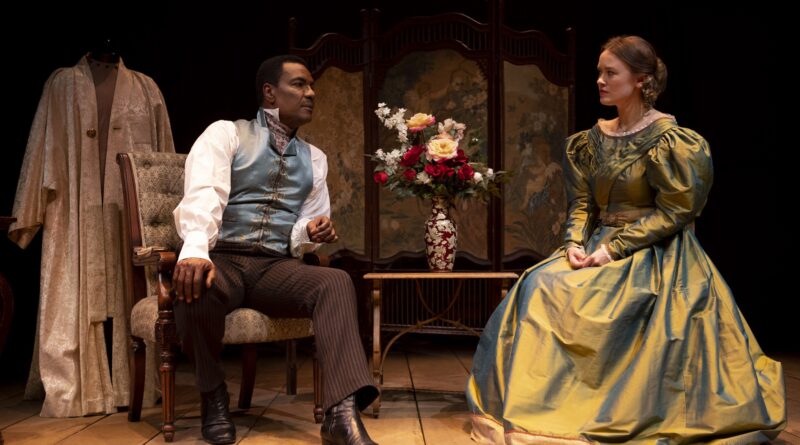Red Velvet’s tale of Black actor Ira Aldridge confronts “life out there, on our stage, in here”

Ira Aldridge is not a very well-known figure, but he stands out in 19th-century theatre history. Lolita Chakrabarti’s Red Velvet, on stage now in a new production at Crow’s Theatre directed by Cherissa Richards, dramatizes his story.
It speaks loudly across the centuries.
Described as “an imagined version of true events”, the play begins and ends in 1867 in Łódź, Poland. As it opens, an exhausted and ailing Ira Aldridge arrives at the theater where he will soon play King Lear. This will be the Black American stage actor’s last performance before dying.
Having toured Europe for decades, Aldridge is a big deal to those around him. He knows his own talent, but he worries about his legacy – in part due to pivotal events in 1833. These events, in flashback, are the focus of the play.
Back then, legendary white actor Edmund Kean collapsed on-stage at Covent Garden’s Theatre Royale while playing the role Othello. It would be Kean’s last performance before dying.
And Aldridge was asked to take over the role of Othello. That’s right: 32 years before Abolition put an end to slavery in the United States, and at a time when there was no concept of – let alone a career path for – a Black classical actor, Aldridge trod the boards of a major London stage in this iconic Black role.
Chakrabarti’s play conjures a British society which was then wracked by the Abolition debate. It dramatizes the circumstances and backstage dynamics leading up to and away from Aldridge’s historic opportunity – which turned out to be his final performance on a British stage.
The play is bisected by intermission into contrasting halves. The first half is energetic, ebullient and inspirational. It’s the story of Aldridge ascendent: working hard on his craft and determined to elevate the cast’s collective performance to take advantage of this opportunity. As Aldridge, the charismatic Allan Louis exudes a compelling mix of joy, urgency and vulnerability. His eyes flash and his voice warms as he discusses his craft. He strives for perfection, but hungers for collaboration and feedback. His complex, nuanced performance makes him not just the play’s focus, but the most compelling presence on the stage.

The first half also introduces the rest of the company and staff as they move through Julie Fox’s spare, evocative backstage set. They are a microcosm of 1833 London. Kyle Blair plays Pierre Laporte, the manager of the Theatre Royal who chooses Aldridge to take over as Othello. His nuanced performance traces the struggle of an ally between courage and realpolitik. Ellen Denny plays Ellen Tree, Desdemona to Aldridge’s Othello, as a young actor with an appealing mix of curiosity, confidence and mercurial humour. The sighing, strutting, storming Jeff Lillico is the picture of obnoxious, inherited entitlement as Kean’s traditionalist actor son Charles. And Patrick McMamus as Bernard Warde and Nathan Howe as Henry Forester bring personality to their roles as backstage mouthpieces for the opposing sides of the abolition (and the Aldridge as Othello) debate. Finally, Starr Dominique plays Trinidadian maid Connie with restraint and insightful, clear-eyed pragmatism.
These character dynamics are realized with a light touch and a surprising amount of humour. In this first half of Red Velvet, we laugh – sometimes full-out, sometimes ruefully – at echoes, or rather premonitions, of the specious arguments for “tradition” and against representation we still hear today.
Given the play’s Shakespearean bookends, however, the second half of Red Velvet bends inevitably towards tragedy as it explores the critical reception and its fallout.Though coded in different terms by different parties, the sticking point is simple: a Black man roughly handling a white woman on stage. In 1833 London, such a spectacle has consequences, and they are not funny. The laughter dries up, and the drama dials up, leading to the devastating, hauntingly staged final scene.
Of course, Red Velvet’s tale of Aldridge the ambitious actor reflects – or rather, refracts – Shakespeare’s story of the manipulated Moor. Aldridge even has a white wife named Margaret, played with pluck and pathos by Amelia Sargisson (who ably inhabits two other roles, as well). But there’s nothing reductive in the comparison between the two characters: parallels glint, but divergences also gleam.
Early in the play, manager Laporte laments the proliferation of “lifeless plays that say nothing about who we are.” Theatre, he asserts, should be “a political act, a debate of our times”. So it’s the responsibility of theatrical companies “to confront life out there, on our stage, in here. Make it live.”

Ultimately, this tight production of Red Velvet does a splendid job at exactly this. Its story of Aldridge – the man, the husband, and the talented actor with the uncompromising work ethic and soaring ambitions – offers a timely meditation on the courage and consequences of a true theatrical “political act” for the multi-dimensional human being who “made it live”.
And “on our stage, in here” at Crow’s Theatre, we confront questions of justice and representation that reverberate loudly – all the way from 1833 to 2022 – in “life out there”.
Reserve tickets to Red Velvet on crowstheatre.com.
©Scott Sneddon, SesayArts Magazine, 2022
About The Author
Scott Sneddon
Scott Sneddon is Senior Editor on SesayArts Magazine, where he is also a critic and contributor.
Visit About Us > Meet the Team to read Scott’s full bio …




